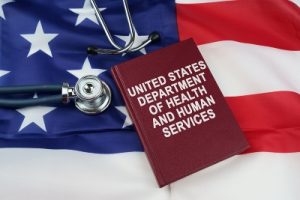
In its work to "enhance the health and well-being of all Americans," the Department of Health and Human Services (HHS) oversees more than 100 programs across 13 agencies. Ten of these agencies are focused on public health, with three having human services as their main mission.
Across all of these agencies, there is a shared focus on the secure and ethical use of technology to improve public health and wellbeing. In 2023, HHS had an IT budget of $8.5 billion. Despite this spending, HHS has struggled to meet federal requirements. It did not score well on a cybersecurity audit, partly due to a lack of coordination among the operating units. Continue reading


 Equity is highlighted in
Equity is highlighted in  The Department of Health and Human Services (HHS) has been in the spotlight like never before with their critical role in managing the pandemic. While there is a lot of work still to be done on that front, other critical efforts are taking place across HHS agencies that will have an incredible impact on the health and well-being of citizens.
The Department of Health and Human Services (HHS) has been in the spotlight like never before with their critical role in managing the pandemic. While there is a lot of work still to be done on that front, other critical efforts are taking place across HHS agencies that will have an incredible impact on the health and well-being of citizens.

